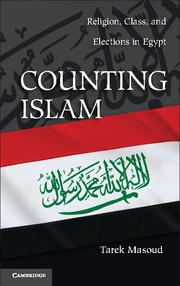Book contents
Introduction: An Islamist Monopoly
Published online by Cambridge University Press: 05 July 2014
Summary
The years following the overthrow of Egypt's long-reigning dictator, Hosni Mubarak, have been unkind to those who hoped for a new era of liberty and pluralism in the Arab world's most populous country. Though the protests that resulted in Mubarak's departure on February 11, 2011, seemed at first to have been inspired and organized by a diverse group of liberal, progressive, and technologically savvy young people – represented, in Western minds at least, in such personalities as Wael Ghonim, a U.S.-educated Google employee, and Gihan Ibrahim, a graduate of the American University in Cairo – that heady victory gave way to a nearly unbroken string of triumphs for religiously conservative Islamist parties that had been at best reluctant participants in Egypt's revolutionary drama. First, in January 2012, the Freedom and Justice Party (Ḥizb al-Ḥurriyah wa al-ʿAdālah) – the political arm of the eighty-five-year-old Society of Muslim Brothers (Jamāʿat al-Ikhwān al-Muslimūn) – captured 37 percent of the vote and 46 percent of the seats in the country's first post-authoritarian parliament (before the body was dissolved by the country's highest court). In addition, an even more conservative newcomer called the Party of Light (Ḥizb al-Nūr) – variously described as “populist-puritans,” “ultra-Orthodox,” or “ultra-conservative religious monsters,” – captured 28 percent of the vote and 24 percent of the seats. Six months later, in June 2012, the Muslim Brotherhood's Mohamed Morsi captured the country's presidency.
- Type
- Chapter
- Information
- Counting IslamReligion, Class, and Elections in Egypt, pp. 1 - 13Publisher: Cambridge University PressPrint publication year: 2014



